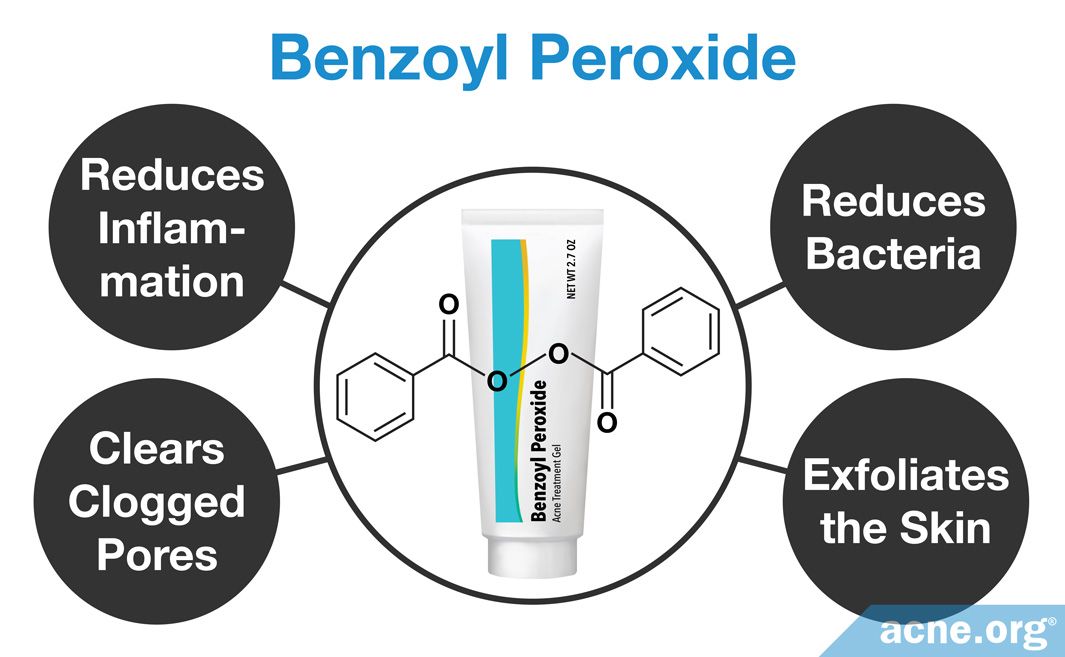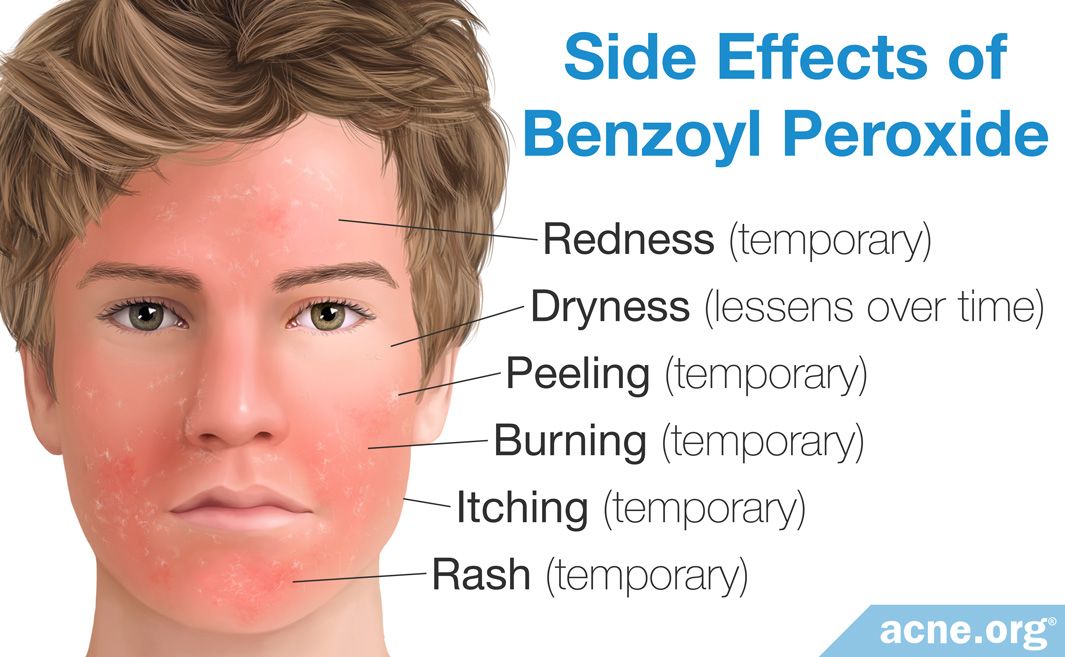What is Benzoyl Peroxide?
 |
| Benzoyl Peroxide Source:acne.org |
Benzoyl peroxide is a well-known ingredient for fighting acne. Available in over-the-counter gels, cleansers, and spot treatments, this ingredient comes in different concentrations for mild to moderate breakouts.
Benzoyl peroxide is sometimes mixed with potassium hydroxyquinoline sulfate. This is an "antimicrobial" ingredient that kills micro-organisms on your skin.
Benzoyl peroxide has three actions - it kills germs (bacteria), it reduces inflammation and it helps to unplug blocked pores. You can buy benzoyl peroxide without a prescription at a pharmacy. It comes in different brand names and strengths - there is a 2.5%, 4%, 5% and 10% strength. Some benzoyl peroxide products are available on prescription only. This is because they contain other active ingredients such as antibiotics or retinoids (exfoliants).
Benzoyl peroxide is also available in combination preparations used for acne. It can be combined with an antibiotic called clindamycin or with another medicine used for acne, called adapalene.
How to Use Benzoyl Peroxide?
- Before using this product for the first time, check if you are allergic to it. To check, put a small amount on one or two small areas of acne for three days. If you have an allergic reaction, stop using this product and get medical help right away (see the symptoms of an allergic reaction in the Side Effects section). If you don't have an allergic reaction, you can use the product.
- Another key is to choose the appropriate concentration. The concentration that you choose to use may depend on your skin.
- What concentration to use also depends on where you apply the benzoyl peroxide.
- In starting you have to use at least twice in a day. When you first start using it, you will be recommended to use a 4% or 5% strength preparation. This will help keep any skin irritation to a minimum. If you find it does irritate then try the 2.5% strength once the irritation has settled. These strength preparations often work as well as the higher 10% strength preparations and cause less skin irritation. If necessary, you can increase the strength of the preparation as you go on, but do this gradually.
- Creams and gels should be applied about 15 minutes or so after washing the area with soap and water and gently drying with a towel. At first you may want to wash the preparation off after a few hours, but gradually try to increase the length of time you leave it on the skin. When your skin is used to the preparation, aim to put it on twice a day and leave it on.
- If using cleansers containing benzoyl peroxide, wet the affected area. Gently rub the cleanser into the skin for 10-20 seconds. Work into a full lather and rinse thoroughly and then pat dry. If too much drying occurs, you may need to rinse the cleanser off sooner or use it less often. Consult your doctor or pharmacist for further details.
- If you are using the liquid wash, cleansing pad, or cleanser bar, use it instead of soap once or twice a day. Wet the skin before applying, gently work up a lather for 10 to 20 seconds, and rinse thoroughly. Do not scrub the skin.
Side Effects of Benzoyl Peroxide
 |
| Side Effects of Benzoyl Peroxide Source:acne.org |
It may be helpful to use it once a day, and then build up the frequency in application over time if your skin can tolerate it. You can also minimize side effects by starting with a lower concentration.
Talk to your doctor if you see any of this side effects:
- severe itching
- severe stinging
- swelling
- peeling
- mild stinging
- itching
- skin dryness, peeling
- redness or other irritation.
Peeling and Flaking
Another side effect you'll probably notice: peeling, flaking skin. This condition is usually worse during the first few weeks of treatment, and slowly improves as your skin gets used to the medication.
Redness and Irritation
Another thing benzoyl peroxide can do to your skin is make it red, sometimes really red, especially right after you use it. For most people, the redness appears immediately after use and fades within a few minutes to an hour (although it can last longer).
If your skin is very irritated, start with a lower concentration of benzoyl peroxide first, and move up if needed. There is no reason to use a 10% benzoyl peroxide if a 2.5% will do. Using higher percentages increases your chance of irritation.
Dry Skin
Nearly every acne treatment causes some amount of dryness, but benzoyl peroxide tends to dry out the skin. Almost everyone using it will experience some dryness. The higher the percentage of the benzoyl peroxide you're using, the more likely you are to develop dry skin.



0 Comments